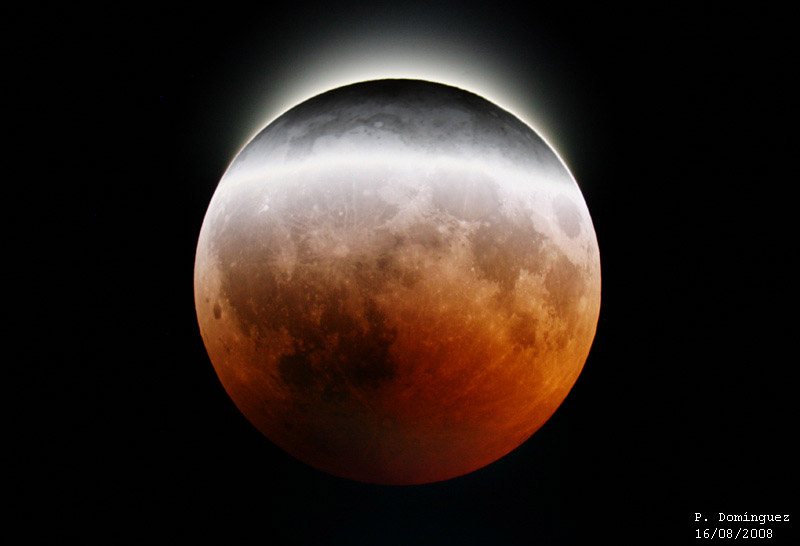Difference between revisions of "February 1, 2018"
(Created page with "__NOTOC__ =Just an Eclipse= Originally published August 17, 2008 <!-- Start of content --> <!-- ws:start:WikiTextHeadingRule:1:<h1> --> <!-- ws:start:WikiTextLocalI...") |
(No difference)
|
Latest revision as of 01:03, 1 February 2018
Just an Eclipse
Originally published August 17, 2008

image by Patricio Dominguez Alonso, Madrid, Spain
Lunar eclipses are perhaps the most common of non-periodic astronomical events, and partial ones sometimes are hardly noticeable. But Patricio's image of last night's partial eclipse is dramatic because of his technique. Partial eclipses - and partial phases of total lunar eclipses - are difficult to image satisfactorily because of the extremes of brightness between the darkened and the fully illuminated portions of the the Moon. Patricio has combined two images, a long exposure to capture the eclipsed portion of the Moon, and a very short one to record the Full Moon portion, to make a single composite image, with a band of over-exposure to mark the transition between the two zones. The exposure of the northern, non-eclipsed portion of the Moon replaced the way-over exposed part from the long exposure, but sky glow from that over-exposure remains as a visual reminder of how the partial eclipse appeared to the eye. It is interesting that a slice of the southeast quadrant of the eclipsed Moon is especially dark.
Chuck Wood
Technical Details
08/16/2008, 20:15 UT. Celestron C8 (1979)+ HEQ5+ Celestron focal reducer + Canon Eos 20D. Composite image (overlapping a 1/160s image and a 2s Image @ 100ASA).
Related Links
I thank George Tarsoudis, Chasiotis Elias, Miguel Claro and John Komninos for submitting their excellent eclipse images too!
Another technique to record hyper bright and faint.
Yesterday's LPOD: A Classic View
Tomorrow's LPOD: Shadowy Measures
COMMENTS?
Register, Log in, and join in the comments.



